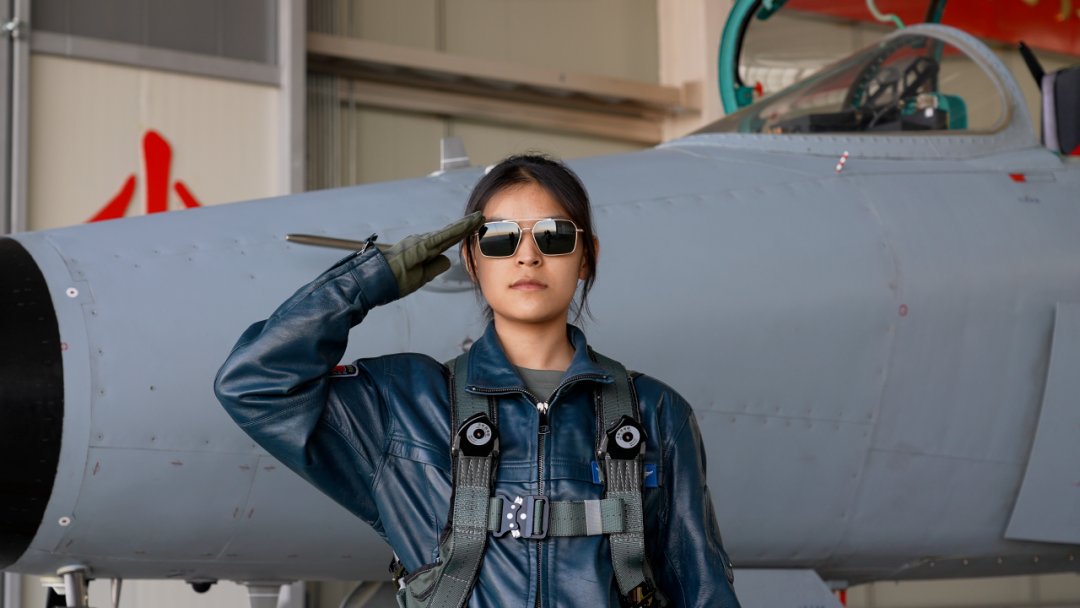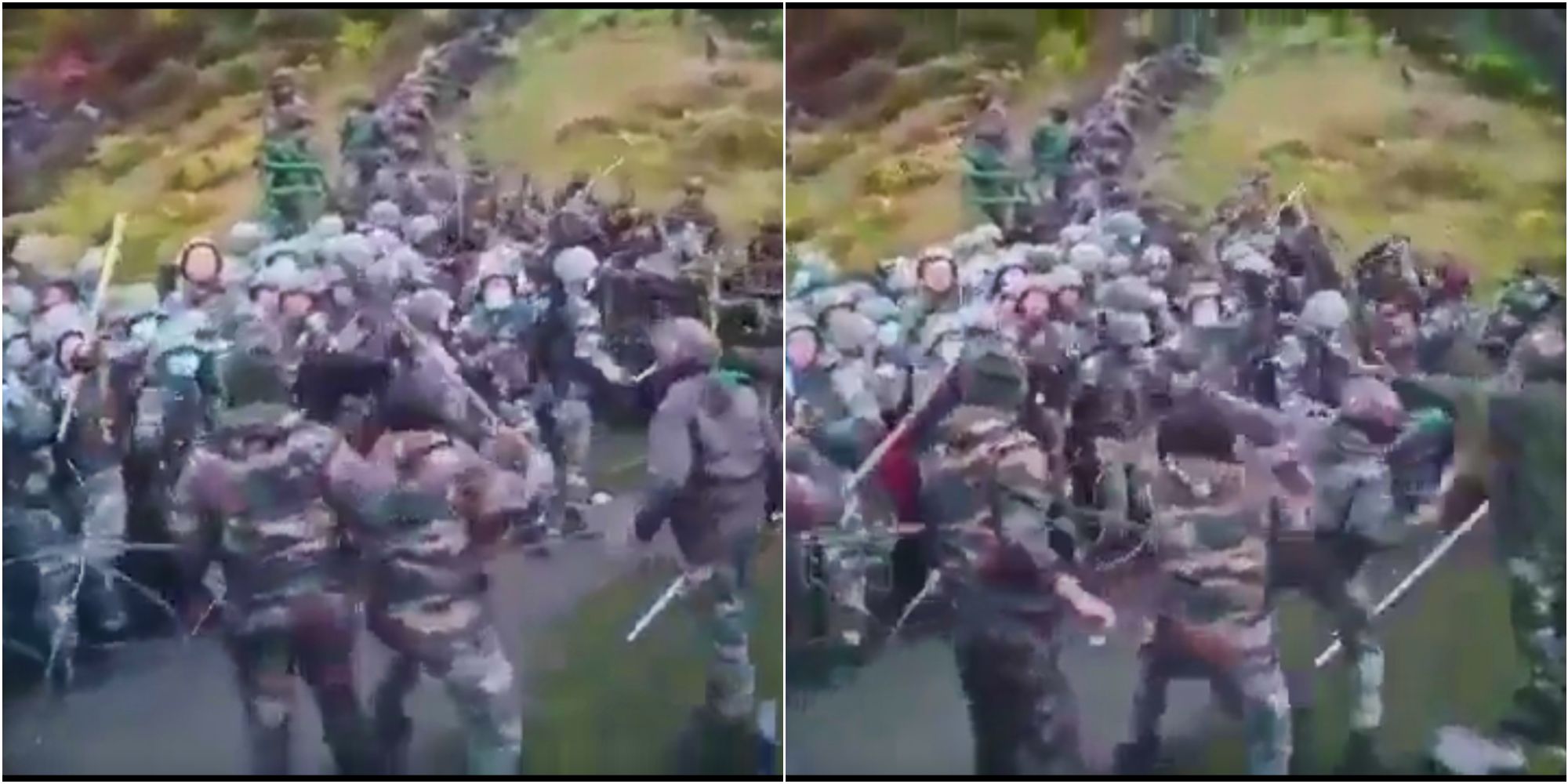Predictions have been made about India and China going to war in the Himalayas. If it ever comes to that, it will be Tibetans on both sides of the border fighting each other.
Recently, a Tibetan woman became the first to fly a fighter jet in the Chinese People’s Liberation Army-Air Force (PLAAF).
China has made it compulsory for every Tibetan family to send one member to the military. The move has come amidst rising tensions with India along the Line of Actual Control (LAC). India is home to thousands of Tibetan refugees and the Tibetan government in exile. The Buddhist spiritual leader, the Dalai Lama, who fled Tibet, also resides in India.
After undergoing a loyalty test that includes learning the mainland Chinese language and accepting the supremacy of the Chinese Communist Party (CCP) over any other belief, Tibetan youths are allowed to join the forces. This is one of the ways to quell the Tibetan rebellion.
Tibet was communist China’s first conquest. Beijing now has its sights set on Taiwan, seeing the self-governing island as the most important piece of territory to be brought into Beijing’s embrace.
China Daily, the largest English portal in China, reported that Kelsang Pedron, born in Lhokha city in the Xinjiang region, has become the first Tibetan woman to fly a combat jet. She cleared her solo test flight to fulfill her “dreams of becoming a combat pilot.”
According to the report, the 23-year-old was studying at the Beijing Tibet Middle School in 2017 when she dreamt of becoming the first Tibetan woman to achieve the feat.
“Becoming an Air Force aviator is glorious, and I wanted to try so that I could safeguard the motherland’s blue skies. But flying appeared to be a distant dream for me, an ordinary girl, at that time,” Kelsang Pedron was quoted as saying.
In August 2019, Kelsang Pedron reported at the Air Force Aviation University, becoming the first-ever Tibetan woman to start learning combat aircraft operation. The report claims that male Tibetan aviators have been part of the Chinese armed forces since the mid-1970s.

After the relations between India and China plummeted, the Indian intelligence community noted the uptick in the recruitment of Tibetans in China’s armed forces seeking to strengthen its position along the border marked with harsh climatic conditions.
Government officials were quoted as saying that “the Chinese Army has started this project to induct one member each from the loyal families of Tibetans who would be deployed permanently at the LAC with India.”
When names of 38 Chinese soldiers purportedly killed in the 2020 Galwan clash circulated on X, formerly called Twitter, eight names indicated the slain soldiers were from Tibet, and their names tallied more or less with Tibetan names transliterated in Pinyin (Lakpa, Tsering, Kalsang, etc.). Even as it cannot be independently confirmed, it gives a peak in the future.
The Open-Source Intelligence has indicated that the Tibetan youths are being trained for the operations along the LAC with India, and regular exercises are being held in this regard. The Tibetan Youths have the upper hand over the regular Chinese troops as they are better acclimatized to the extreme weather conditions.
Apart from this, the Tibetan youths bring greater acceptance of the Chinese rule among the local population in the Tibet Autonomous Region (TAR).
The PLA has been actively scouting for Hindi-speaking Tibetans and Nepalis from TAR to help both in interpretation and intelligence-gathering along the LAC.
The Tibet Military District, which comes under the PLA’s Western Theatre Command and controls the lower half of the LAC, such as areas bordering India’s north-eastern states of Sikkim, Arunachal Pradesh, and Uttarakhand, has been carrying out recruitment drives in universities in search of Hindi graduates.
Statistics suggest there are 7,000 active Tibetan military personnel in the PLA, of which around 1,000 Tibetans, including about 100 females, enrolled in Special Tibetan Army Units.
PLA Takes A Leaf Out Of Indian Army’s Playbook
The major push for drafting Tibetans into the People’s Liberation Army began at the start of 2021 after China was caught off guard by the performance of the Indian Special Frontier Force comprising Tibetans-in-exile.
Reports indicated that the Indian Army’s regular troops, along with the Tibetan special frontier force of the Cabinet Secretariat, played a pivotal role in missions against the Chinese Army on the southern bank of Pangong Tso (lake) in Ladakh in 2020. They physically occupied the Mokhpari, Black Top, and other heights in response to Chinese aggression along the LAC.
Since then, the two sides have been engaged in several rounds of talks to find a solution, but all have proven desultory.

India’s Special Frontier Force
The Special Frontier Force (SFF) is an Indian special forces unit composed primarily of Tibetan refugees. It was established after the Sino-Indian War of 1962 with the primary objective of conducting covert operations behind Chinese lines in case of another conflict with China.
Initially, it was a small unit, but over time, it expanded in both size and scope of operations.
These soldiers undergo specialized training and safeguard India’s security through covert missions. Throughout its history, the SFF has participated in major external wars, including the Bangladesh Liberation War and the Kargil War.
The SFF operates in border regions, including operations against China, including the clashes between the two forces in 2020 and 2021.
Based in Chakrata, Uttarakhand, the SFF is directly supervised by the Intelligence Bureau (IB) and later the Research and Analysis Wing (RAW), India’s external intelligence agency. Although not part of the Indian Army, it functions under its operational control with its own rank structure, charter, and training infrastructure.
The Inspector General of SFF, selected from the Indian Army’s Major General rank, reports directly to the Prime Minister’s Office.
- Ritu Sharma has been a journalist for over a decade, writing on defense, foreign affairs, and nuclear technology.
- The author can be reached at ritu.sharma (at) mail.com
- Follow EurAsian Times on Google News




